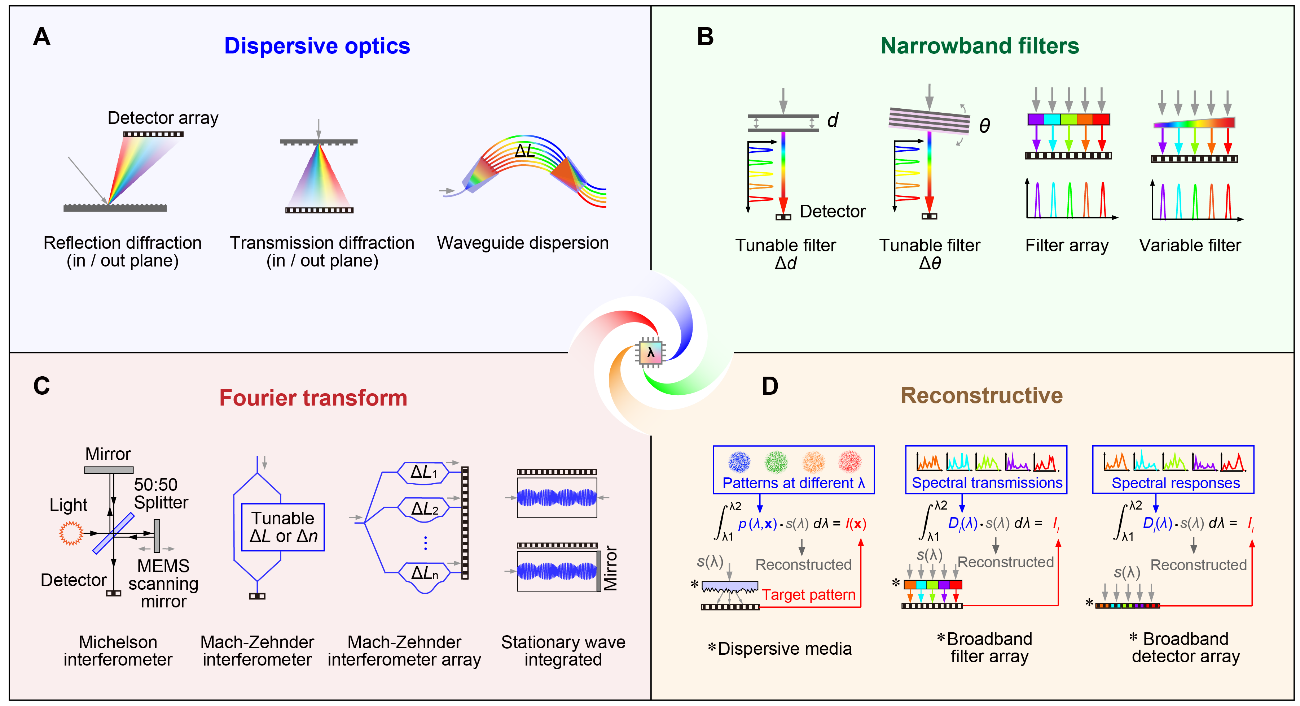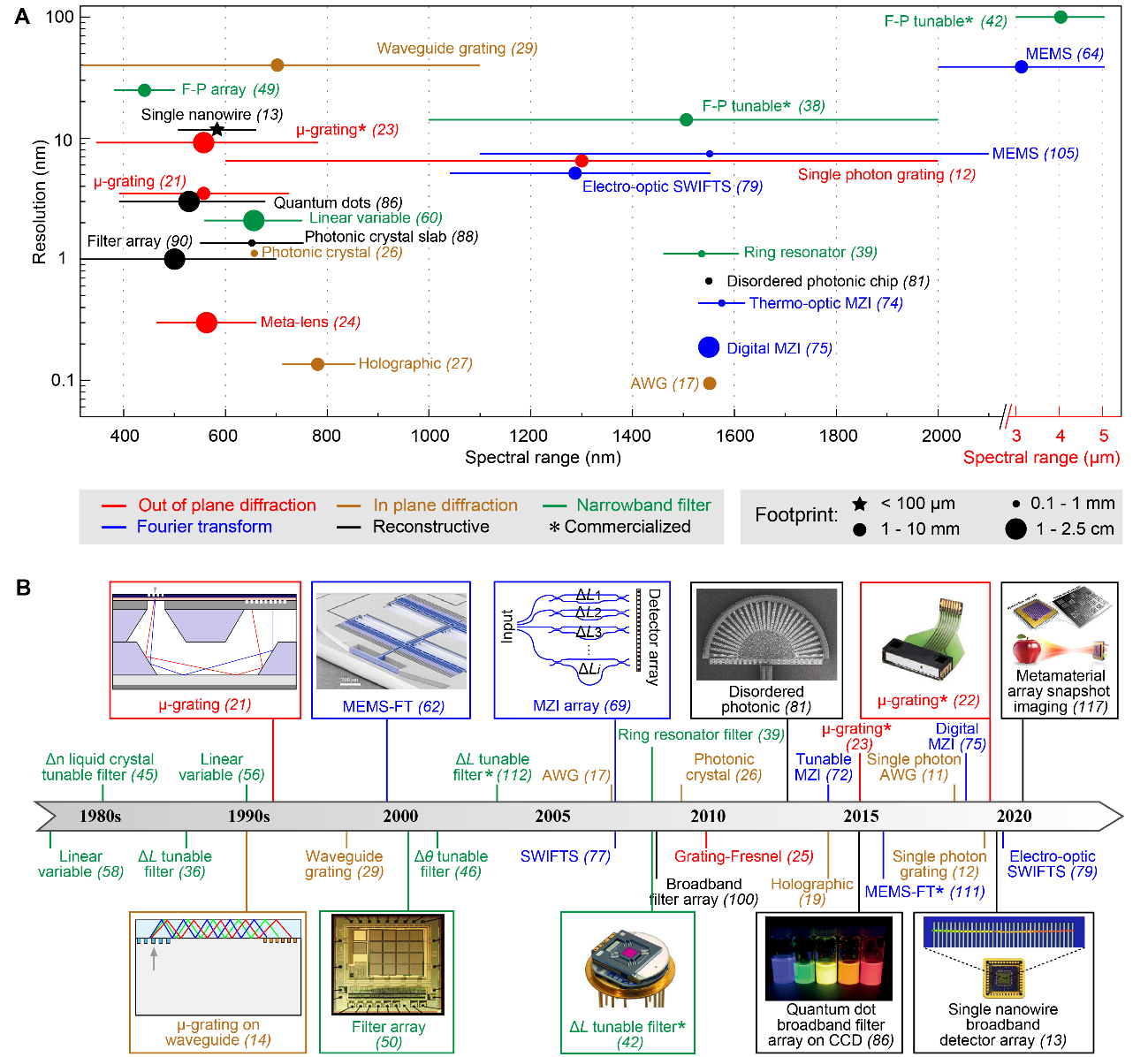
News

News
On January 29, Weiwei Cai, a research professor of the Institute of turbomachinery, College of mechanical and power engineering, published a paper entitled "minimization of optical spectrometers" in the journal Science, which systematically analyzed the technical route, technical breakthrough and subsequent application of spectrometer miniaturization. Professor Cai and Professor Hasan at Cambridge University are the corresponding authors. This is the first time that our faculty has published research results on Science as a corresponding author.
Spectrometer is one of the most commonly used measurement tools in scientific research and industrial applications. It can characterize the spectrum of a substance and analyze its composition and structure. Traditional spectrometers have complex structure, large volume and poor portability. This paper summarizes and analyzes four kinds of micro-spectrometers developed in the past three decades, namely dispersive optics, narrowband filters, Fourier transform and computational spectroscopy.

Four technical routes of spectrometer miniaturization
This paper points out the important technological breakthroughs in the development of micro spectrometer, and thinks that the development of micro-spectrometer mainly depends on the progress of processing technology and the improvement of computing power. The early development of micro-spectrometers mainly used the breakthrough in the field of micro-manufacturing from the 1980s to the early 21st century. The progress of lithography and etching technology and the continuous development of MEMS technology make it possible to manufacture complex micro dispersive devices, filters and Fourier transform systems. In the past decade, the development of mathematical tools such as computing power, computing cost, compressed sensing and deep learning has injected new vitality into the improvement of micro-spectrometers. At present, the computational spectrometer has become the most promising technology. Researchers have proposed a series of new spectrometers, such as quantum dot spectrometer, super surface spectrometer and so on.

Important technological breakthroughs and time nodes in the development of micro spectrometer
Micro-spectrometers have a broad application prospect. Consumer-grade micro-spectrometer will appear in smartphones, smart bracelets, smart glasses and other electronic devices, become an important part of global sensor network, and create a market of 100 billion; the emergence of micro hyperspectral camera will bring new changes in the fields of intelligent agriculture, geological exploration, tumor diagnosis; the combination of nano-optoelectronic devices and computational spectroscopy technology will become a high-tech industry. Hyperspectral imaging at high speed (≥ 100 kHz) provides a new route, which can provide a new measurement method for the experimental study of advanced engine turbulent combustion and high temperature gas dynamics in shock tunnels.
Professor Cai is committed to the intersection and integration of computational imaging and combustion diagnosis technology, forming a distinctive research direction of thermophysical metrology. In recent years, more than 50 papers have been published in prestigious journals such as Science, Progress in Energy and Combustion Science, Journal of Fluid Mechanics and other journals. The related work is supported by the National Natural Science Foundation of China ( No. 52061135108, 51976122, 51706141).
Paper link: https://science.sciencemag.org/content/371/6528/eabe0722

Shanghai Jiao Tong University
Address: 800 Dongchuan Road, Shanghai
200240